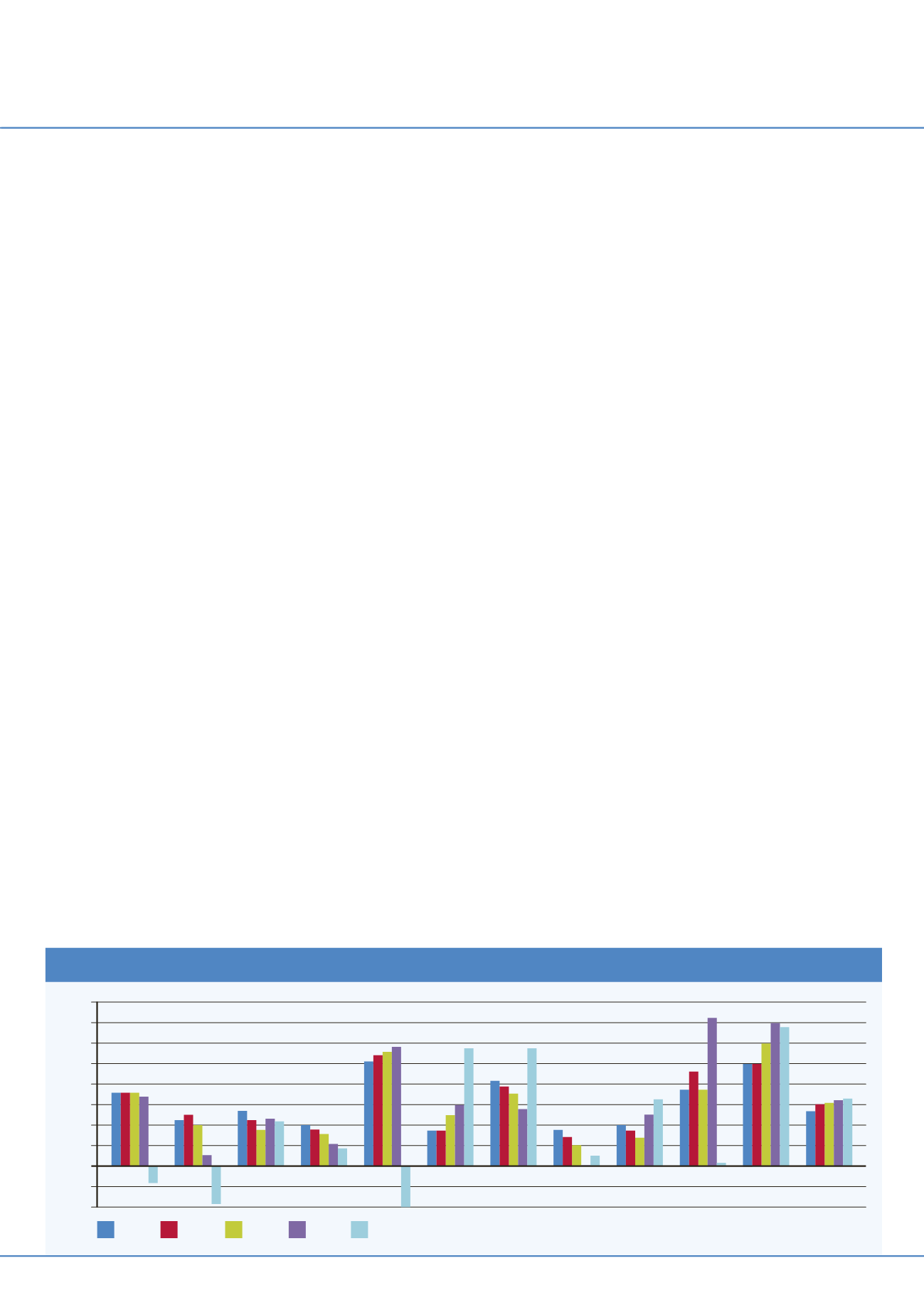
23
ECONOMIC OUTLOOK
African potential
july-august 2014
international
construction
>
African potential
Sub-Saharan African construction markets offer some of the highest growth prospects in
the world. This often comes with greater risk and more volatility than in other areas, but in
many countries it is getting easier to do business.
Scott Hazelton
reports.
T
he construction outlook for sub-Saharan
Africa is generally positive, although there
are wide swings in growth prospects across
countries depending on individual political and
economic policies.
The key driver for growth is commodity exports,
and this dependence translates to economic
vulnerability. The current situation of a sustained
recovery in the US and Western Europe emerging
from recession is a mixed blessing for the region.
While stronger markets increase export demand,
they also compete for capital. Since developed
economies are less risky than emerging markets,
they siphon away funds needed for infrastructure
and industrial expansion in the developing world.
Another factor is that Chinese manufacturing
and export growth is weakening, limiting
its demand for raw materials and stagnating
commodities prices.
Expanding domestic markets, income gains and
regional integration will support economic growth
of +5% - +6% in sub-Saharan Africa this year,
which is second only to Asia (excluding Japan) for
growth globally. Macroeconomic management is
improving in most countries, poverty is declining
and foreign direct investment is rising.
Growth in Africa’s middle class will create
opportunities for consumer markets and improved
housing. On the minus side, poor infrastructure
(especially power generation), political instability
and corruption remain obstacles to economic
development.
In some countries, there is also terrorism or civil
war. On balance, the outlook is positive, but it
could be better.
There are also data challenges with Sub-Saharan
Africa, which makes construction forecasting
difficult. With limited historic information,
indicators like fixed investment have to be used
to gain an insight into the construction market,
and this is a reliable proxy. The graph illustrates
this data.
By country
Angola’s economic growth will continue to be
driven by oil production and infrastructure.
The nation’s oil production has the potential to
increase to 2 million barrels per day (mbd) from
1.5 mbd, a critical development as this sector
accounts for over half of GDP.
Angola plans to diversify its economy, using oil
revenues to support non-oil industries and an
ambitious infrastructure building programme.
New investment is occurring in refining and
smelting while transportation infrastructure
upgrades are being made in part to advance the
agricultural sector. A US$ 9 billion liquefied
natural gas pipeline will add to growth.
Early signs of economic diversification are
appearing. Angola now exceeds the lower bound
of a middle-income country, creating demand for
residential and commercial construction. Tourism
is also developing, although in addition to hotel
construction, Angola also needs to clear landmines
and rebuild transport and communications
infrastructure.
In contrast to Angola, Cameroon is constrained
by weakness in the hydrocarbon sector as oil
production is declining and reserves are dwindling.
However, new discoveries in the Rio del Rey,
Douala Krini-Campo and Longone-Buni basins
may alleviate the problem in the medium-to-long
term, and create construction opportunities.
Cameroon has used international aid programs
to reduce its external debt by 50%, freeing up
revenue for infrastructure and development
spending. Infrastructural improvements in the
energy sector are expected to improve supply, and
the water sector will also benefit as the government
aims to double agricultural production.
Cote d’Ivoire will spend US$ 4 billion in
agriculture development by 2015, including
storage facilities and the rehabilitation of roads
and irrigation infrastructure.
Infrastructure is also a problem for the
Democratic Republic of the Congo (DRC),
compounded by a mining sector hampered by
lower copper prices. Debt forgiveness allows
the DRC to fund infrastructure, but disputes
with foreign oil and mining companies have
exacerbated concerns about the business climate.
Rising aid and investment is a positive trend,
and increased capacity in the energy sector could
satisfy both domestic and regional power demand.
For example, the Congolese and South African
governments are moving ahead with the Inga III
project to produce 4.8 GW of hydropower.
Progress on funding has been made with the
Sino-Congolese Co-operation Agreement, which
Annual fixed investment growth
Sub-
Saharan
Africa
South
Africa
Senegal
Nigeria
Namibia
Kenya
Guinea
Ghana
Democratic
Republic
of Congo
Botswana
Angola
2011
2012
2013
2014
2015
16%
14%
12%
10%
8%
6%
4%
2%
0%
-2%
-4%
Zimbabwe


